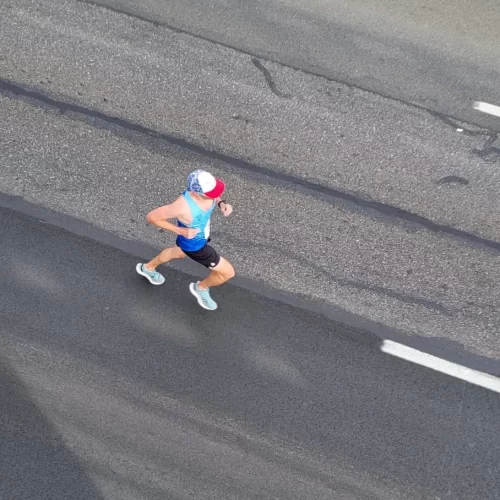I often get questions asking about exercise, its impact on mental health and wellness, specifically should someone include exercise as part of their therapy or wellness plan. Most people, following their physician’s advice, would benefit from incorporating physical activity into their lives.
The Science Behind Exercise and Mental Health
The physiological and biochemical mechanisms underlying this relationship are well-documented:
Neurotransmitter Regulation: Exercise increases the production of neurotransmitters such as serotonin, dopamine, and endorphins, all of which play key roles in mood regulation (Mikkelsen et al., 2017). Low levels of serotonin are linked to depression, and physical activity has been shown to enhance serotonin production, improving overall mood (Salmon, 2001).
Reduction in Stress Hormones: Physical activity reduces levels of cortisol and adrenaline, hormones associated with stress. A study by Hamer et al. (2010) found that individuals who engage in regular physical activity exhibit lower stress hormone levels and improved resilience to stress.
Neuroplasticity and Brain Health: Exercise promotes neurogenesis—the formation of new neurons—particularly in the hippocampus, a brain region involved in emotion regulation and memory. Aerobic exercise has been found to enhance brain-derived neurotrophic factor (BDNF), which supports neuronal survival and cognitive function (Cotman et al., 2007).
Inflammation Reduction: Chronic inflammation has been linked to depression and other mental health disorders. Research indicates that exercise reduces inflammation by modulating immune responses and decreasing pro-inflammatory cytokines (Dunn et al., 2005).
Sleep Improvement: Regular physical activity improves sleep quality by regulating circadian rhythms and reducing insomnia symptoms, which in turn positively influences mental well-being (Kredlow et al., 2015).
The Psychological Benefits of Exercise
Reduction in Anxiety and Depression: A meta-analysis by Schuch et al. (2016) found that exercise is an effective intervention for depression, with effects comparable to psychotherapy and medication in some cases. Physical activity helps reduce symptoms of anxiety disorders by providing a natural coping mechanism.
Enhanced Self-Esteem and Confidence: Regular exercise contributes to improved body image and self-perception, leading to higher self-esteem and confidence (Fox, 1999). Accomplishing fitness goals reinforces a sense of achievement. Exercise is not the only type of activity that could create a sense of accomplishment and achievement. Lots of hobbies and interests could facilitate an increase in self-efficacy and confidence.
Mindfulness and Emotional Regulation: Activities such as yoga, tai chi, and running promote mindfulness by encouraging individuals to focus on their breathing, movement, and body sensations. Mindfulness-based exercises are particularly effective in reducing rumination, a common feature of depression and anxiety (Broman-Fulks & Storey, 2008). It is important to see this as a practice that we will get better at over time.
Cognitive Enhancement: Exercise has been linked to improved cognitive function and a lower risk of cognitive decline. A study by Kramer et al. (1999) found that older adults who engaged in aerobic exercise showed significant improvements in executive function and memory.
The Role of Social Connection and Exercise
Individual exercise can provide significant mental health benefits and often under researched and recommend aspect of exercise is the social aspects of physical activity. Recovery-Oriented Cognitive Therapy (CT-R) and other therapies can be helpful in rebuilding social connections and increasing social activities. In fact, CT-R would consider exercise and social connection part of the therapy instead of an adjunct to the therapy.
Research has demonstrated that isolation and disconnection lead to poor outcomes (ex. mental, physical, and social) across all populations regardless of mental health diagnosis. Social connection is a crucial determinant of overall well-being, and when combined with exercise, it creates a synergistic effect that maximizes psychological benefits.
Group Exercise and Community Engagement: Studies show that participating in group workouts, team sports, or exercise classes increases motivation and adherence to physical activity (Yorks et al., 2017). The social support from peers fosters a sense of belonging, reducing feelings of loneliness and isolation.
Social Support and Mental Resilience: A review by Reblin and Uchino (2008) found that social support acts as a buffer against stress and mental health disorders. Exercising with others fosters supportive relationships, encouraging individuals to maintain healthy habits and cope with challenges more effectively.
Accountability and Motivation: Exercising with a partner or group enhances accountability, making it more likely that individuals will adhere to their fitness routines. This consistency contributes to long-term mental health improvements.
Reduction in Social Anxiety: Engaging in physical activity within a social setting can help individuals with social anxiety develop confidence in social interactions. Group exercises provide structured environments where individuals can interact with others without the pressure of traditional social settings.
Best Types of Exercise for Mental Health
Although all forms of physical activity contribute to mental well-being, some exercises are particularly effective in promoting psychological health:
Aerobic Exercise (Running, Cycling, Swimming): Cardiovascular workouts enhance brain function, reduce stress, and elevate mood through the release of endorphins.
Strength Training: Resistance training has been found to reduce symptoms of depression and anxiety while boosting self-esteem (Gordon et al., 2018).
Yoga and Tai Chi: These mind-body exercises emphasize mindfulness, relaxation, and controlled breathing, making them highly effective for reducing stress and anxiety.
Team Sports: Activities such as soccer, basketball, and tennis provide not only physical benefits but also opportunities for social bonding and teamwork.
Walking and Hiking: Even low-intensity activities such as walking in nature have been shown to reduce stress and improve mood through exposure to natural environments (Bratman et al., 2015).
Practical Tips for Incorporating Exercise into Daily Life
I always advise my clients who want to incorporate exercise into their therapy to start by identifying activities they enjoy. If you dislike running, don’t force yourself to run solely for its mental health benefits. Instead, choose an activity that interests you and build it up from there. Engaging in something you dislike may reduce its potential positive effects, including the social benefits. For example, if you don’t enjoy running, it may be harder to connect with members of a running group, who are likely passionate about the activity. Here are some additional tips for those looking to harness the mental health benefits of exercise:
Start Small: Begin with short sessions and gradually increase duration and intensity to build a sustainable habit.
Find Activities You Enjoy: Engaging in activities that bring enjoyment increases adherence and long-term commitment.
Make It Social: Join a fitness class, sports team, or walking group to integrate social connections into exercise routines.
Set Realistic Goals: Establish achievable fitness goals to maintain motivation and a sense of accomplishment.
Incorporate Movement into Daily Life: Opt for active commuting, take walking breaks, and use stairs instead of elevators.
Listen to Your Body: Avoid overexertion and choose activities that align with your current fitness level.
Conclusion
Exercise is a powerful tool for enhancing mental health, supported by extensive scientific research. Its effects on neurotransmitter regulation, stress reduction, neuroplasticity, and overall psychological well-being make it an effective intervention for mental health disorders. However, the benefits of exercise are significantly amplified when social connection is incorporated. Whether through group fitness classes, team sports, or simply walking with a friend, integrating social elements into physical activity fosters motivation, accountability, and emotional resilience. As mental health challenges continue to rise globally, adopting an active lifestyle with a focus on community engagement can serve as a transformative approach to well-being.
References
Mikkelsen, K., Stojanovska, L., Poljak, A., & Apostolopoulos, V. (2017). Exercise and mental health. Maturitas, 106, 48–56. https://doi.org/10.1016/j.maturitas.2017.09.003
Salmon, P. (2001). Effects of physical exercise on anxiety, depression, and sensitivity to stress: A unifying theory. Clinical Psychology Review, 21(1), 33-61. https://doi.org/10.1016/S0272-7358(99)00032-X
Hamer, M., Endrighi, R., & Poole, L. (2010). Physical activity, stress reduction, and mood: Insight into immunological mechanisms. Methods in Molecular Biology, 934, 89–102. https://doi.org/10.1007/978-1-62703-017-5_4
Cotman, C. W., Berchtold, N. C., & Christie, L.-A. (2007). Exercise builds brain health: Key roles of growth factor cascades and inflammation. Trends in Neurosciences, 30(9), 464–472. https://doi.org/10.1016/j.tins.2007.06.011
Dunn, A. L., Trivedi, M. H., & O’Neal, H. A. (2005). Physical activity dose-response effects on outcomes of depression and anxiety. Medicine & Science in Sports & Exercise, 37(11), 551-558. https://doi.org/10.1249/01.mss.0000188480.16931.77
Kredlow, M. A., Capozzoli, M. C., Hearon, B. A., Calkins, A. W., & Otto, M. W. (2015). The effects of physical activity on sleep: A meta-analytic review. Journal of Behavioral Medicine, 38(3), 427–449. https://doi.org/10.1007/s10865-015-9617-6
Schuch, F. B., Vancampfort, D., Richards, J., Rosenbaum, S., Ward, P. B., & Stubbs, B. (2016). Exercise as a treatment for depression: A meta-analysis adjusting for publication bias. Journal of Psychiatric Research, 77, 42-51. https://doi.org/10.1016/j.jpsychires.2016.02.023
Fox, K. R. (1999). The influence of physical activity on mental well-being. Public Health Nutrition, 2(3a), 411–418. https://doi.org/10.1017/s1368980099000567
Broman-Fulks, J. J., & Storey, K. M. (2008). Evaluation of a brief aerobic exercise intervention for high anxiety sensitivity. Anxiety, Stress, & Coping, 21(2), 117-128. https://doi.org/10.1080/10615800701848911
Kramer, A. F., Colcombe, S. J., Erickson, K. I., & Bherer, L. (1999). Effects of aerobic fitness training on cognitive function: A meta-analytic approach. Acta Psychologica, 103(1-2), 301–321. https://doi.org/10.1016/s0001-6918(99)00027-x
Yorks, D. M., Frothingham, C. A., & Schuenke, M. D. (2017). Effects of group fitness classes on stress and quality of life of medical students. The Journal of the American Osteopathic Association, 117(11), e17. https://doi.org/10.7556/jaoa.2017.140
Reblin, M., & Uchino, B. N. (2008). Social and emotional support and its implications for health. Current Opinion in Psychiatry, 21(2), 201–205. https://doi.org/10.1097/YCO.0b013e3282f3ad89
Gordon, B. R., McDowell, C. P., Hallgren, M., Meyer, J. D., Lyons, M., & Herring, M. P. (2018). Association of efficacy of resistance exercise training with depressive symptoms. JAMA Psychiatry, 75(6), 566-576. https://doi.org/10.1001/jamapsychiatry.2018.0572
Bratman, G. N., Hamilton, J. P., Hahn, K. S., Daily, G. C., & Gross, J. J. (2015). Nature experience reduces rumination and subgenual prefrontal cortex activation. Proceedings of the National Academy of Sciences, 112(28), 8567-8572. https://doi.org/10.1073/pnas.1510459112




